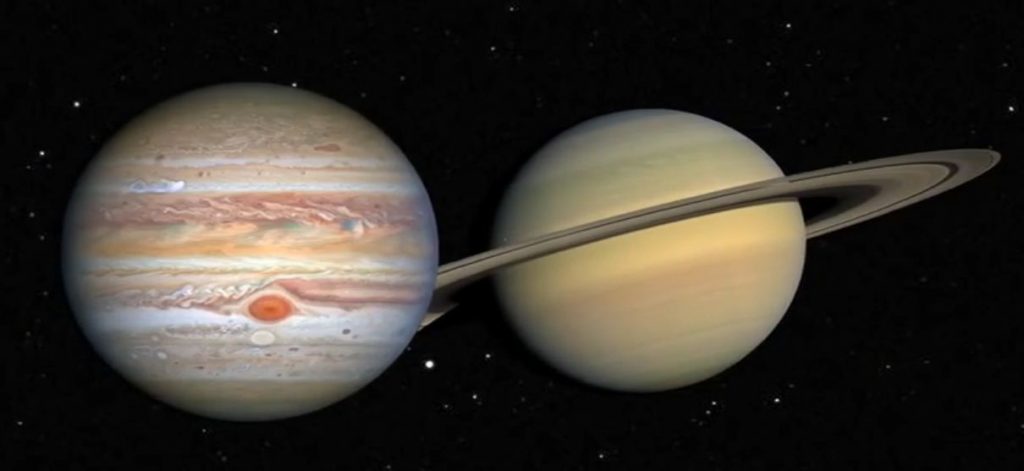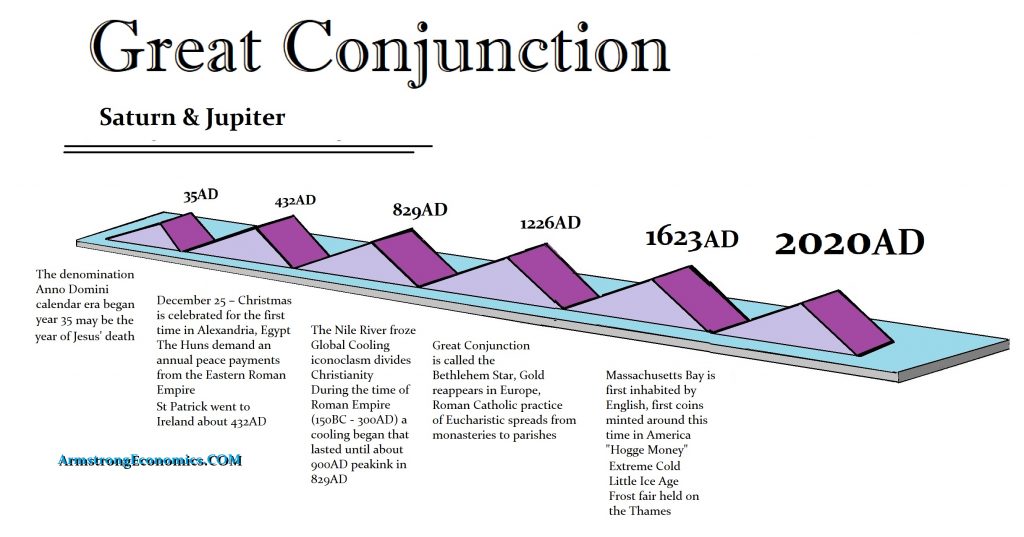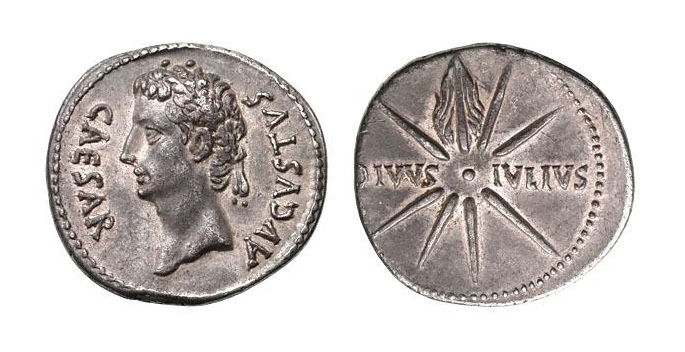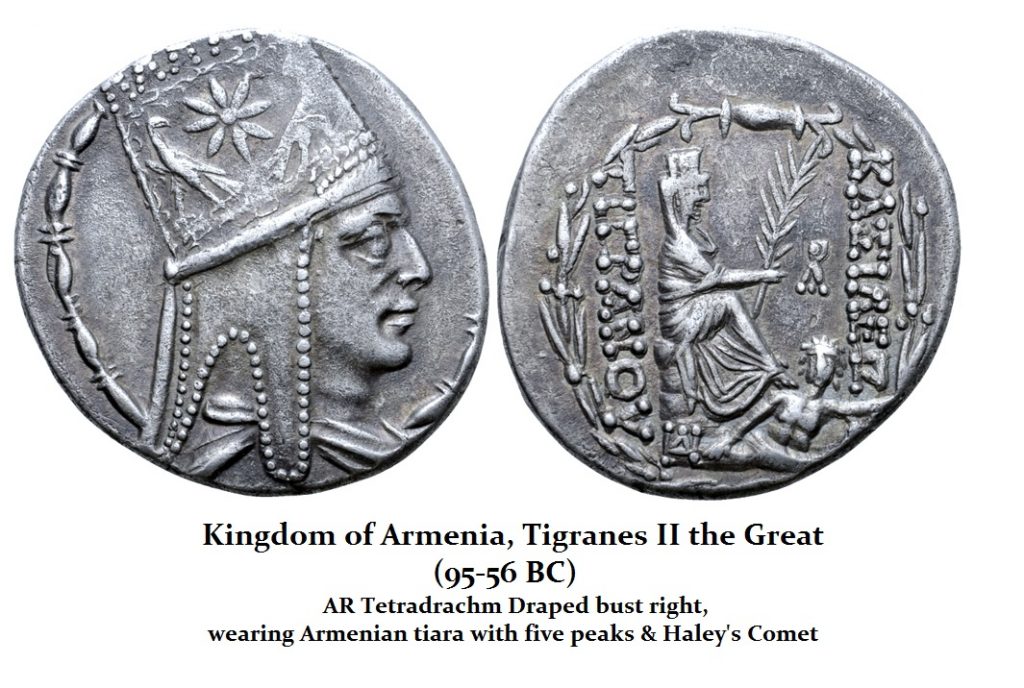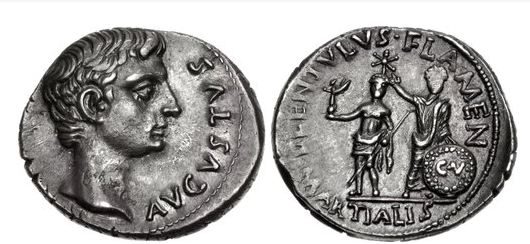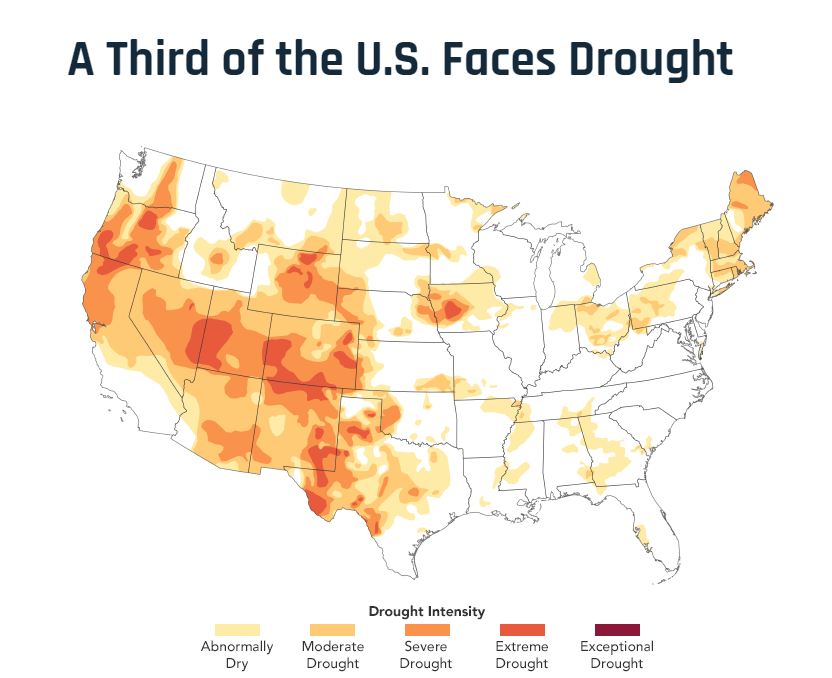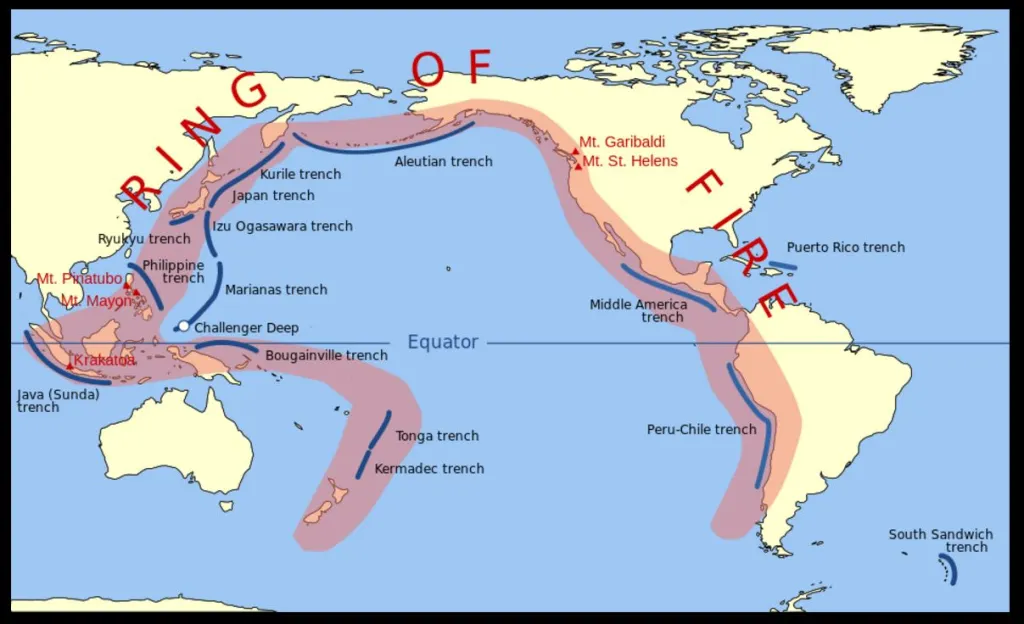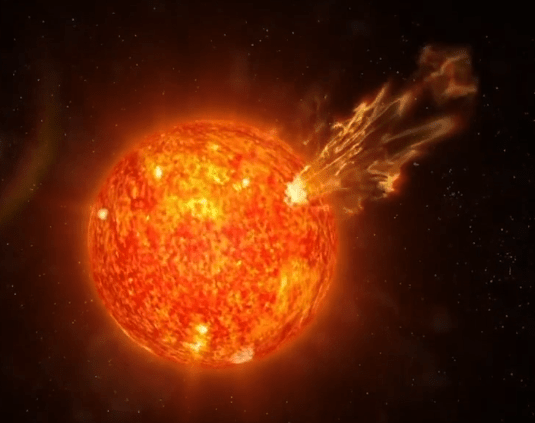Numerous people always ask if astrology is incorporated into Socrates. The answer is no. From what I can say is that what I see is a complex network of numerous variables that keeps the global economy functioning. Trying to say that something will happen in the market because of a planetary convergence that people have been tracking for centuries is subjective to me. That said, planetary conjunctions may not be the cause of some event, but they may be part of a complex network that is behind events.
Next week we have the solstice, which will be the shortest day of the year. That comes every year and does not produce anything on a regular basis. However, this time we have Saturn and Jupiter that will appear to almost kiss this winter solstice, creating the illusion over the centuries that it is a major star appearing out of nowhere. Here, these two gas giants will look as though they’re are virtually one in the night sky in an event known as a “great conjunction,” which happens roughly every 20 years.
Nonetheless, this year’s great conjunction will be exceptionally close coming in just a tenth of a degree apart. The last time Saturn and Jupiter appeared as one star was July 16, 1623, back when the famous Italian astronomer Galileo Galilei observed it. However, this great conjunction varies in closeness, and those events where it is this close take place only every 397 years.
This 397-year cycle is very interesting. It coincides with the 300-year cycle in weather caused by moving into a solar minimum. These events have marked when the climate has turned cold. During the 1600s, they called that the Little Ice Age. Note that in 829, that was also the peak in the mini-Ice Age where the Nile River frize in Egypt. On the 1226 event, it was also believed that the rare Christmas star was shown. This does not appear to be true but it may have marked the crucifixion of Christ.
Events in the heavens have traditionally been seen as omens of some event or another. The appearance of a comet at the time of Julius Caesar’s death promoted his divinity for political purposes. His nephew Octavian, later to be given the name Augustus by the Senate (27 BC-14 AD), issued coins with the comet that appeared at the time of Caesar’s death with the legend: DIVVS IVLIVS (Divine Julius). This was self-serving and used as justification of his rule as the first Emperor of Rome beginning the Imperial Era. But that was not Halley’s Comet.
Halley’s Comet has been recorded as early as 467 BC by the Greeks. The Chinese chroniclers also mention a comet during this year. However, the Chinese astronomer Shiji also recorded its appearance in 240 BC. The Babylonians recorded its appearance in 164 BC in two clay tablets in the British Museum. Again, the Babylonians recorded its appearance once more in 87 BC. It was this appearance that lasted for about one month that was celebrated on the coinage of Tigranes II the Great, an Armenian king who is depicted here on coins with a crown and with the comet. It was portrayed as ushering in a New Era of the brilliant King of Kings. Tigranes II the Great issued the earliest coin depicting Haley’s Comet which is represented by the star in his crown.
Halley’s Comet appeared around 12 BC and it was recorded in the Book of Han by Chinese astronomers of the Han Dynasty. They tracked it from August through October during 12 BC. According to the Roman historian Cassius Dio, a comet appeared almost suspended over Rome for several days at the time of the death of Marcus Vipsanius Agrippa who was Augustus’ close friend. He issued a coin depicting Agrippa with a comet above his head.
There has been considerable debate about whether Halley’s Comet was also the Star of Bethlehem. The appearance in 12 BC, is not that distant from the conventionally assigned date of the birth of Jesus Christ which has a range of 6AD to 4AD. This is based mostly on the biblical story of Herod the Great. Not long before Herod’s death, which is generally attributed to have occurred in 4BC but even that is in dispute.
Referencing the Halley Comet connection, some theologians and astronomers have also to suggested that this might explain the biblical story of the Star of Bethlehem and provide a more documented confirmation of his birth coinciding with the time of the death of Agrippa. However, there are also records of other comets that appeared closer to the date of Jesus’ birth. In a 1991 article in the Quarterly Journal of the Royal Astronomical Society, astronomer Colin Humphreys proposed that the Star of Bethlehem was actually a slow-moving comet, which Chinese observers recorded in 5 BC.
So as you can see, correlating events in the heavens with events on earth has been a pastime for centuries. What does this mean for next week? Besides the fact that the Electoral College must get the final votes to Washington on December 23rd next week where electors could still upset the apple cart, what comes through from this 397-year cycle is the exceptionally cold weather we are experiencing this winter.
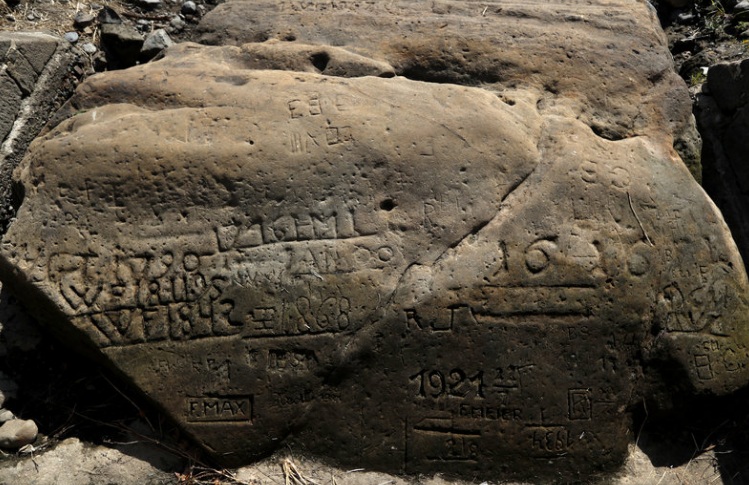
In addition to the colder weather, simultaneously there are also droughts. The Hunger Stones marking droughts appeared in 2018. I have been warning that we are witnessing major droughts around the world. The droughts that have been recorded on the Hunger Stones dating to 1417, 1616, 1707, 1746, 1790, 1800, 1811, 1830, 1842, 1868, 1892, and 1893, which covers a period of 476 years.
I have been warning that while there are colder winders, not warming, and we have droughts in the summer, this is by no means caused by humans. This is a clear historical trend if anyone bothered to look at the contemporary sources during these periods.

